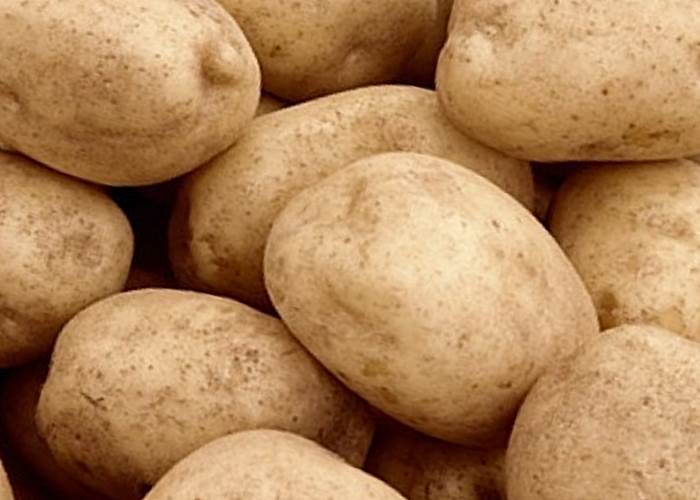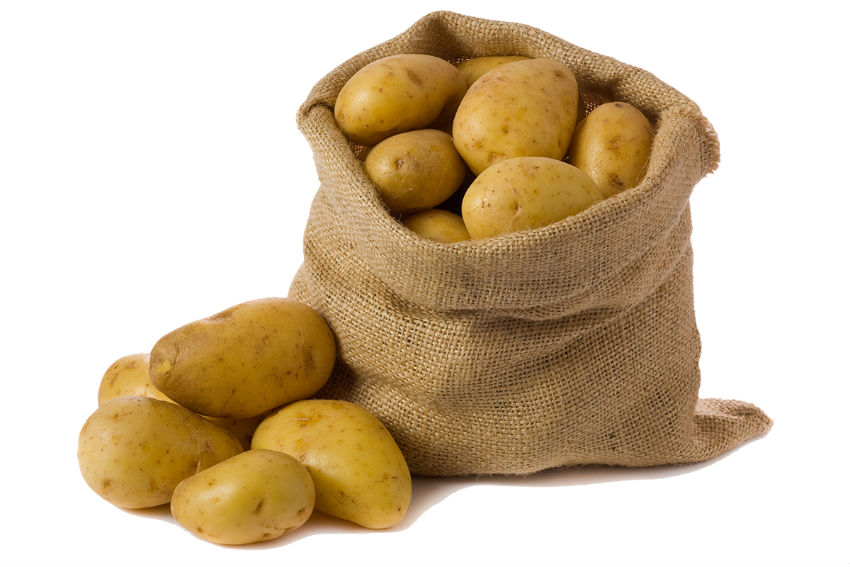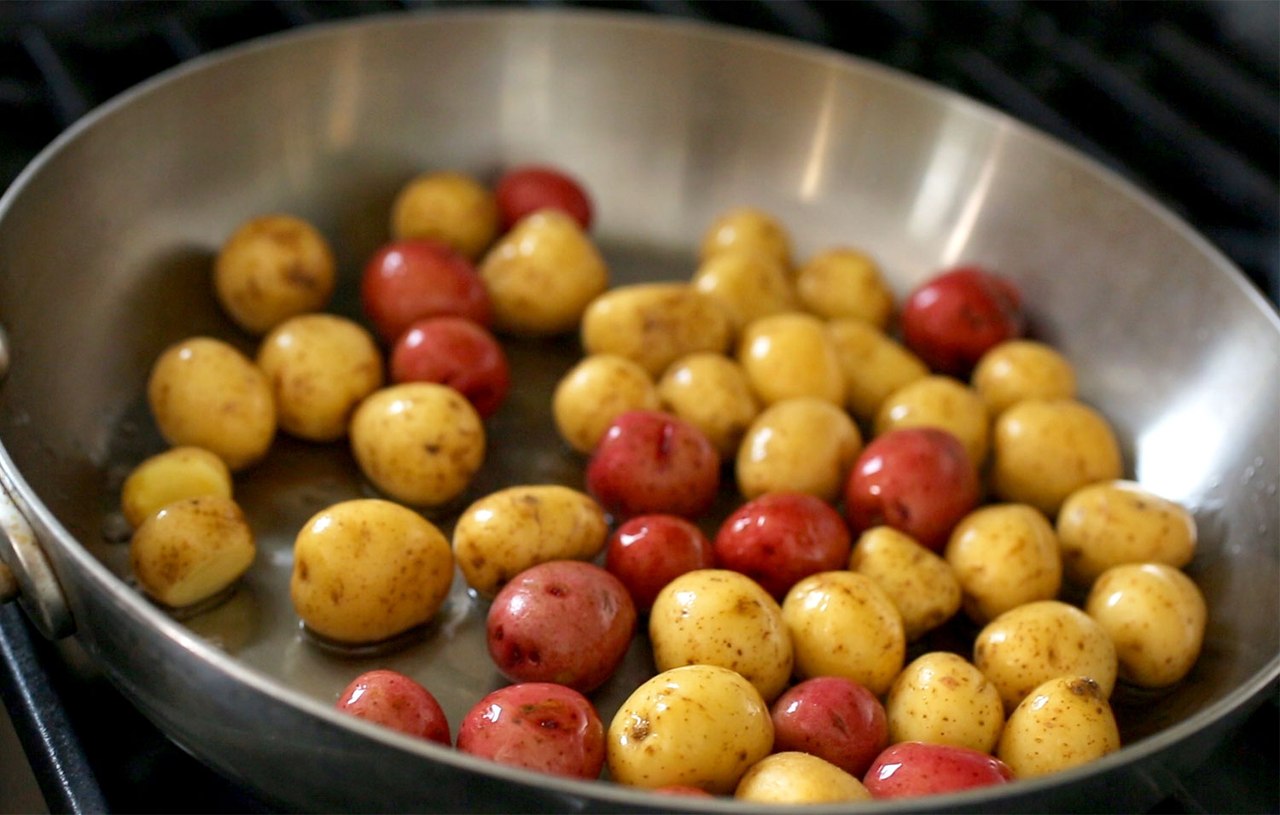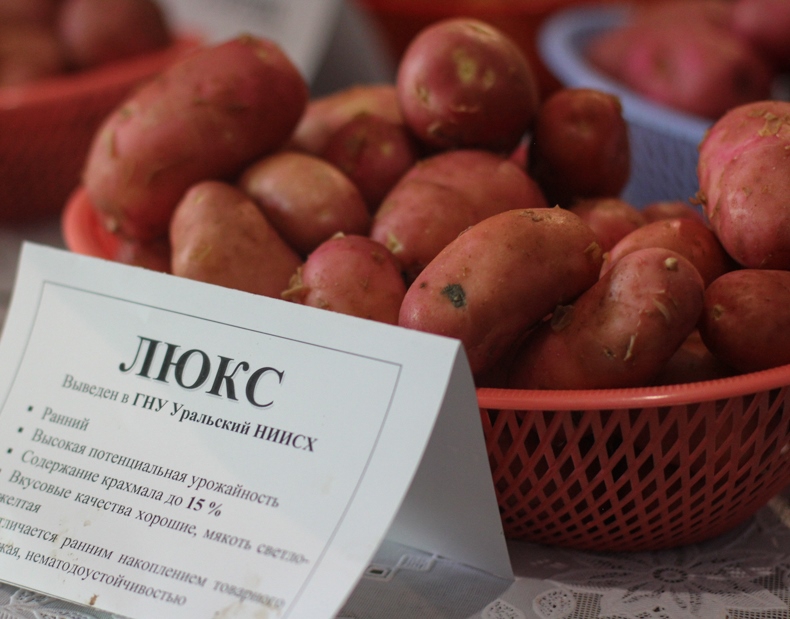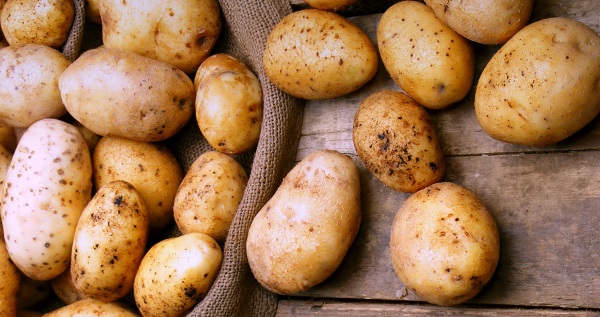Due to the continued popularity of potatoes, its varietal variety increases every year. According to the latest data, there are over 4,000 potato varieties around the world. The most obsolete and unproductive ones are annually excluded from the Registers. To replace them, new and improved modifications are being developed. Russian breeders are constantly working on the creation and improvement of adapted varieties, they carry out regionalization in the conditions of taiga and swampy zones, in northern regions with short cold summers. All this is done in order to simplify the procedure for growing potatoes, even in the most difficult climatic conditions.
Tuleevsky potatoes are created on the basis of combining the best species qualities of the Canadian Tolokan variety and the Russian - Chernsky. It took the scientists of the Kemerovo Research Institute of Agriculture 10 years to crossbreed and zoning. The efforts made were not in vain, and in 2006 a new variety was added to the Register, named after the governor of the Kemerovo region, Aman Gumirovich Tuleev. Thanks to careful adaptation work, the researchers managed to develop a variety that is recommended for cultivation in almost all regions of Russia: from the Nizhny Novgorod region to Sakhalin.
Characteristics of the variety
Tuleyevsky belongs to medium early varieties. Young potatoes can be eaten as early as 2 months after planting, and the final skin formation occurs after 3 months. Outside, the fruit is golden or beige-yellow, the pulp is pale yellow or milky. The texture of the potato is quite soft, the taste is assessed as high: during the heat treatment, the fruits retain their rich taste and pronounced aroma. Tuleevsky potatoes are most suitable for frying and baking.
The bush is very miniature with large leaves and bright white flowers. The berries practically do not appear. In size, the fruits ripen fairly uniform, elongated oval shape. The peculiarity of the variety is that small tubers are formed extremely rarely, while supergiants weighing more than 0.5 kg can sometimes be observed. High performance and unpretentiousness make it possible to grow potatoes on an industrial scale.
Potato variety Tuleyevsky: variety description
| Parameter | Value |
|---|---|
| Yield | 300 c / ha |
| Number of fruits under 1 branch | 14 pieces |
| Tuber weight | 300 BC |
| Ripening period | 3 months |
| Bush height | 35 cm |
| Safety in winter | 0.9 |
| Starch content | 0.16 |
Growing features
To grow this variety, it is not at all necessary to create special conditions. But if a gardener has a goal - to get as much high-quality harvest as possible, then some points are still worth paying attention to:
- Material preparation. Cooking should be started 4 weeks before planting. To do this, they are taken out of the storage area and laid out in 1-2 layers in a dark place where there is no access to the sun's rays. The germination temperature should not be lower than +15 ˚С. During this time, the skin should acquire a light green hue. When the peel turns green, it indicates that it has acquired a protective barrier against disease. Since potatoes are vulnerable to nematodes, preventive treatment of planting material can be carried out. Spraying is carried out on the day of planting with drugs such as Commander or Prestige;
- Soil preparation is carried out in two stages: preliminary - in autumn, presowing - in spring. In autumn, the main task is to dig up the soil, remove the remains of plants, weeds, roots and, if necessary, apply fertilizers. You can apply a layer of manure (fresh or rotted) at the rate of 4-6 kg / m2. Eggshell powder or dolomite flour is scattered on highly acidified soils, consumption is 0.3 kg / m2. Spring preparation begins when the soil is dry enough. The earth is dug up and lumps are broken;
- Landing. Since this variety is compact, planting with reduced gaps is allowed - up to 50 cm between rows. However, in order for the tubers to maximize their volume, it is worth leaving the standard row spacing - 70 cm.The seeding depth is 10-15 cm, on heavy clay soils - no more than 8 cm, otherwise there is a possibility that the potatoes will not germinate. The planting period is the first decade of May, when the average daily air temperature is + 10˚C, and the soil warms up by 10 cm.If the probability of nematode infection is very high, then in addition a handful of ash can be poured into each hole during planting;
- Care. Unlike many varieties, Tuleyevsky needs three hilling. The first hilling is carried out when the sprouts are hatched. They must be sprinkled with earth immediately. This is done in order to protect the seedlings from frost. The second hilling is done in the budding phase and at the beginning of flowering. The last time the potatoes need to be spud is when the bushes are massively blooming and the branches are lowered to the ground. Potatoes respond very well to shallow inter-row loosening, which softens the top layer and allows air to penetrate the root system. Despite the fact that the nematode does not like well-moistened soils, Tuleyevsky potatoes do not respond very well to abundant watering. It tolerates drought much easier. Most often, natural irrigation by rain is sufficient for potatoes. Only in a very dry summer, when there has been no precipitation for a month, can the area be watered, but this must be done carefully, it is enough to moisten only the top layer by 5-7 cm. Watering is only necessary between the rows, without touching the bush. Potatoes are indifferent to fertilizing, especially chemical ones. Reacts well only to organic fertilizers (manure, compost, chicken droppings, humus) applied in the fall. But the Tuleevsky potato suffers a boron deficiency very painfully. The bushes lose their healthy appearance, the branches bend to the ground, the leaves turn yellow along the veins, the flowers dry out and fall off, and voids appear in the tubers. Boric acid treatment should be done during the entire period of growth and development of tops and tubers. An aqueous solution (2 g of the product per 10 l of water) is sprayed on the site in the morning or evening, preferably cloudy. 1 liter of solution is consumed per 1 m2;
- Harvesting. At the end of August, when the tops are dry, you can harvest. It is best to choose a sunny day so that the dug potatoes lie in the sun and dry out. You need to sort the seed immediately. Tubers for planting need to be washed, put to dry, about 1 for a week. The rest of the crop can be stored at +3 ˚C.
Advantages and disadvantages
| pros | Minuses |
|---|---|
| High adaptability to climatic conditions | It is difficult to grow Tuleevsky seed potatoes on your own, it is better to buy planting material with a stock from manufacturers or in a store |
| The density of the arrangement of tubers in the nest allows you to harvest with minimal losses due to mechanical damage | Due to the lack of boron in the soil, hollow areas are formed in the fruits |
| The miniature size of the green part of the plant allows more economical use of space; bushes can be planted more often than many other varieties | Easily attacked by nematodes |
| Tubers develop well even without special feeding | |
| Immunity against rot, infectious and viral diseases | |
| Does not deteriorate during transportation and is stored for a long time with minimal losses |
Tuleevsky potatoes have characteristics that allow it to stay in the top ten Russian varieties for 10 years. These potatoes are well suited for regions with difficult climatic conditions and infertile soils. The taste and aroma will appeal to all lovers of mashed potatoes, as well as fried, baked and boiled potatoes.
